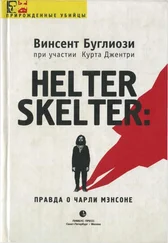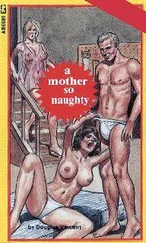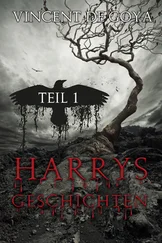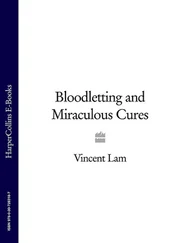A.“Possibly.”
Q.“In other words, you don’t feel that she is such a lost soul that she could never be rehabilitated?”
A.“No, I don’t think she is that lost a soul, no.”
To a psychiatrist, no one is beyond redemption. This is essential, standard testimony. Yet only one of the defense attorneys, Maxwell Keith, asked the question, and then only on redirect.
Earlier I’d brought out that Hochman had only the word of the girls that they were on LSD either night. I now asked him: “Have you ever read a reported case in the literature of LSD of any individual who committed murder while under the influence of LSD?”
A.“No. Suicide, but not murder.”
As I’d later ask the jury, could Watson, Atkins, Krenwinkel, and Van Houten, all four , be exceptions?
A large portion of Hochman’s testimony had dealt with the mental states of the three girls. Susan Atkins was suffering from a diagnosable condition, he said: an early childhood deprivation syndrome which had resulted in a hysterical personality type.
This was not legal insanity as defined by M’Naghten.
Leslie Van Houten was an immature, unusually impulsive person, who tended to act spontaneously without reflection.
Nor was this legal insanity as defined by M’Naghten.
In his report on Krenwinkel, Dr. Claude Brown, the Mobile psychiatrist, had stated that “at the time I saw Miss Krenwinkel, she showed a schizophrenic reaction.” He added, however, that “I do not state with any certainty that this psychosis existed at the time of the alleged murders.”
Schizophrenia may be legal insanity as defined by M’Naghten. But Dr. Brown’s opinion was qualified, and when Fitzgerald asked Dr. Hochman if, on the basis of his examination of Krenwinkel, he agreed that she was, or had been, schizophrenic, Hochman replied, “I would say no.”
It remained to bring these points across to the jury, in terms they could easily understand.
On recross-examination I had Hochman define the word “psychotic.” He replied that it meant “a loss of contact with reality.”
I then asked him: “At the present time, Doctor, do you feel any of these three female defendants are psychotic?”
A.“No.”
Q.“In your opinion, do you feel that any of these three female defendants have ever been psychotic?”
A.“No.”
BUGLIOSI“May I approach the witness, Your Honor? I want to ask the witness a question privately.”
THE COURT“Yes, you may.”
I had already questioned Dr. Hochman once about this. But I wanted to be absolutely certain of his reply. Once I had received it, I returned to the counsel table and asked him a number of unrelated questions, so the jury wouldn’t know what we had been talking about. I then gradually worked up to the big one.
Q.“The term ‘insanity,’ Doctor, you are familiar with that term, of course?”
A.“Yes.”
Q.“Basically, you define the word ‘insanity’ to be the layman’s synonym for ‘psychotic’?”
A.“I would say that the word ‘insanity’ is used generally to mean ‘psychotic.’”
Q.“Then, from a psychiatric standpoint, I take it that in your opinion none of these three female defendants are presently insane nor have they ever been insane, is that correct?”
A.“That is correct.”
As far as the psychiatric testimony was concerned, with Hochman’s reply the ball game was over.
The defense called only three more witnesses during the penalty trial, all hard-core Family members. Each was on the stand only a short time, but their testimony, particularly that of the first witness, was as shocking as anything that had gone before.
Catherine Gillies, whose grandmother owned Myers Ranch, parroted the Family line: Charlie never led anyone; there was never any talk of a race war; these murders were committed to free Bobby Beausoleil.
Coldly, matter-of-factly, the twenty-one-year-old girl testified that on the night of the LaBianca murders, “I followed Katie to the car, and I asked if I could go with her. Linda, Leslie, and Sadie were all in the car. And they said that they had plenty of people to do what they were going to do, and that I didn’t need to go.”
On direct examination by Kanarek, Cathy stated: “You know, I am willing to kill for a brother, we all are.”
Q.“What do you mean by that?”
A.“In other words, to get a brother out of jail, I would kill. I would have killed that night except I did not go…”
Q.“What prevented you from going with them, if anything?”
A.“Just the fact that they didn’t need me.”
Apparently Fitzgerald hoped to soften the harshness of her reply when he asked her: “Have you killed anybody to get someone out of jail?”
With a strange little smile, Cathy turned her head and, looking directly at the jury, replied: “Not yet.”
Cathy had testified on direct examination that Katie had told her about the Tate-LaBianca murders. On cross-examination I asked her: “When Katie told you that they had murdered these people, did this disturb you at all?”
A.“Actually it had very little effect on me because I knew why they had done it.”
Q.“So it didn’t upset you?”
A.“No, it definitely didn’t upset me.”
Q.“You didn’t decide that you would rather not continue living with murderers?”
A.“Obviously not.”
Q.“Were you upset that you didn’t get to go along with them?”
A.“I wanted to go.”
Mary Brunner, first member of the Manson Family, claimed that the police had told her that she would be charged with murder if she did not implicate Manson in the Hinman slaying. She now repudiated this testimony and further denied even being at the Hinman residence.
Keith brought out that Mary Brunner had testified both in the second trial of Bobby Beausoleil and before the Hinman grand jury, and neither time did she say anything about Leslie Van Houten being present when Hinman was killed.
I had no questions for her. The point was made.
Brenda McCann was recalled to the stand, to testify that on the nights of the Tate and LaBianca murders she had seen Manson sleeping with Stephanie Schram in Devil’s Canyon.
The groundwork for my cross-examination of Brenda had been laid fifteen months before. I impeached her with her testimony before the grand jury, when she stated that she couldn’t remember where she, or Manson, was on either night.
Brenda was the last witness. She completed her testimony on Tuesday, March 16, 1971. That afternoon, after a number of delays—Kanarek, for example, refused to stipulate that Gary Hinman was dead—the defense rested. Wednesday we worked on the jury instructions, and on Thursday the trial entered its final stage. All that now remained were the arguments, the deliberations, and the verdict.
My opening argument in the penalty trial was brief, lasting less than ten minutes. As with all my arguments during the trial, Manson decided to sit this one out, in the lockup. The psychology behind this was obvious: he didn’t want the jury focusing on him when I discussed him.
I began by saying: “I am not going to address myself to the frantic effort by the three female defendants and the defense witnesses to make it look like Charles Manson wasn’t involved in these murders. I am sure all of you clearly saw that they were lying on that witness stand to do what they could for their God, Charles Manson.
Читать дальше












